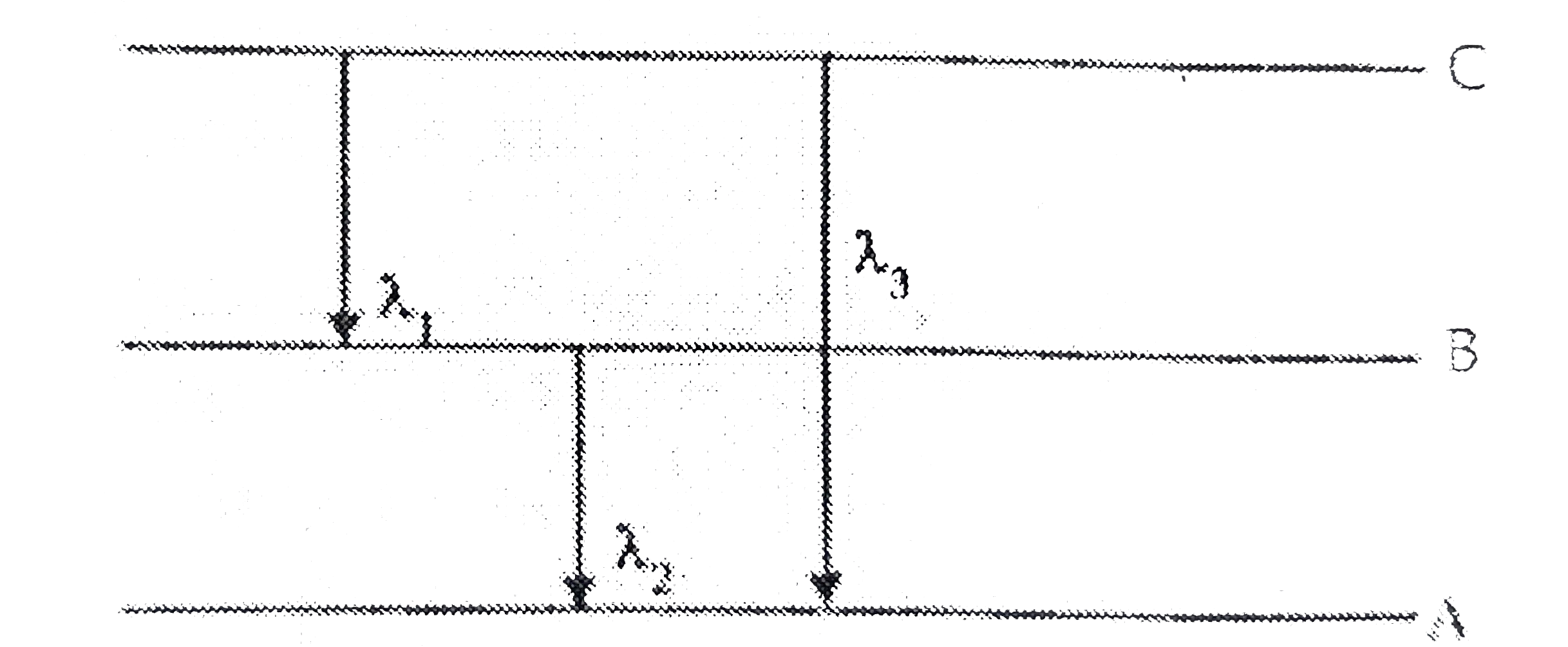State Bohr's quantisation condition?
Step-by-Step Solution:
1. Understanding the Concept: Bohr's quantization condition is a fundamental principle in atomic physics that describes how electrons behave in an atom. It was proposed by Niels Bohr to address the limitations of Rutherford's model of the atom.
2. Defining the Condition: According to Bohr's quantization condition, electrons move in specific orbits around the nucleus of an atom. These orbits are not arbitrary; they are defined by a specific rule regarding the angular momentum of the electrons.
3. Angular Momentum Specification: The condition states that the angular momentum (L) of an electron in a stationary orbit is quantized. This means that the angular momentum can only take on certain discrete values.
4. Mathematical Expression: The mathematical expression for Bohr's quantization condition is given by:
L=nh2π
where:
- L is the angular momentum of the electron,
- n is a positive integer (1, 2, 3,...), known as the principal quantum number,
- h is Planck's constant.
5. Implications of the Condition: This quantization condition implies that electrons can only occupy certain allowed orbits, leading to fixed energy levels in an atom. Electrons cannot exist in between these orbits, which explains the stability of atoms.
6. Conclusion: Bohr's quantization condition fundamentally changed our understanding of atomic structure by introducing the concept of quantized energy levels, which explains the discrete lines observed in atomic spectra.
---
L=nh2π
where:
- L is the angular momentum of the electron,
- n is a positive integer (1, 2, 3,...), known as the principal quantum number,
- h is Planck's constant.
Topper's Solved these Questions
- BOOK - MODERN PUBLICATIONCHAPTER - ATOMS EXERCISE - Revision Exercise (Fill in the blanks )8videos
ATOMS
- BOOK - MODERN PUBLICATIONCHAPTER - ATOMS EXERCISE - Revision Exercise (Short Answer )23videos
ATOMS
- BOOK - MODERN PUBLICATIONCHAPTER - ATOMS EXERCISE - Hots5videos
ATOMS
- BOOK - MODERN PUBLICATIONCHAPTER - ALTERNATING CURRENT EXERCISE - CHAPTER PRACTICE TEST16videos
ALTERNATING CURRENT
- BOOK - MODERN PUBLICATIONCHAPTER - CURRENT ELECTRICITYEXERCISE - Chapter Practice Test15videos
CURRENT ELECTRICITY
Similar Questions
State Bohr's quantisaiton condition of angular momentum . Calculate the shortest wavelenght of the Bracket series and state to which part of the electromagnetic spectrum does it belong .
View Solution(i) State Bohr's quantization condition for defining stationary orbits . How does de- Broglie hypothesis explain the stationary orbits ?
(ii) find the relation beween the three wavelengths
λ1,λ2 and λ3 from the energy level diagram shown :
 View Solution
View Solution
Knowledge Check
- Question 1 - Select One
A diatomic molecule has moment of inertia I. By applying Bohr's quantisation condition, its rotational energy in the nth level (n = 0 is not allowed) is
A1n2(h28π2I)B1n(h28π2I)Cn(h28π2I)Dn2(h28π2I) - Question 2 - Select One
The key feature of Bohr'[s spectrum of hydrogen atom is the quantization of angular momentum when an electron is revolving around a proton we will extend this to a general rotational motion to find quntized rotantized rotational energy of a diatomic molecule assuming it to be right . The rate to energy applied is Bohr's quantization condition
A diatomic molecute has moment of inertie 1by Bohr's quantization condition its rotational energy in the nth level (n=0is¬allowed)isA1n2(h28π21)B1n(h28π21)Cn(h28π21)Dn2(h28π21) - Question 3 - Select One
The M.I. of a diatomic molecule is I. what is its rotational energy in the nth orbit , (where n ≠ 0) if Bohr's quantization condition is used ?
A1n(h28π2I)Bn2(h28π2I)C1n2(h28π2I)Dn(h28πI)
(i) State Bohr's quantization condition for defining stationary orbits . How does de- Broglie hypothesis explain the stationary orbits ?
(ii) find the relation beween the three wavelengths
λ1,λ2 and λ3 from the energy level diagram shown :
 View Solution
View SolutionDerive Bohr's quantisation condition for angular momentum of orbiting electron in hydrogen atom using De Broglie's hypothesis.
View SolutionState Bohr's quantum condition for stationary orbits in terms of de-Broglie wavelength.
View SolutionWrite the Bohr's frequency condition.
View SolutionAs per de-Broglie explanation of Bohr's quantum condition, for an electron revolving in nth circular orbit the total circumference of the orbit 2πr, is equal to______.
View Solution

